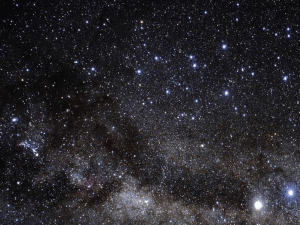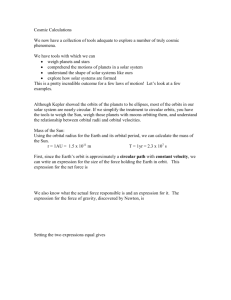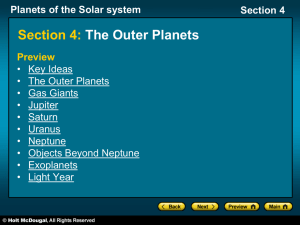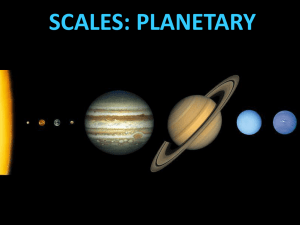Modeling the Solar System
advertisement
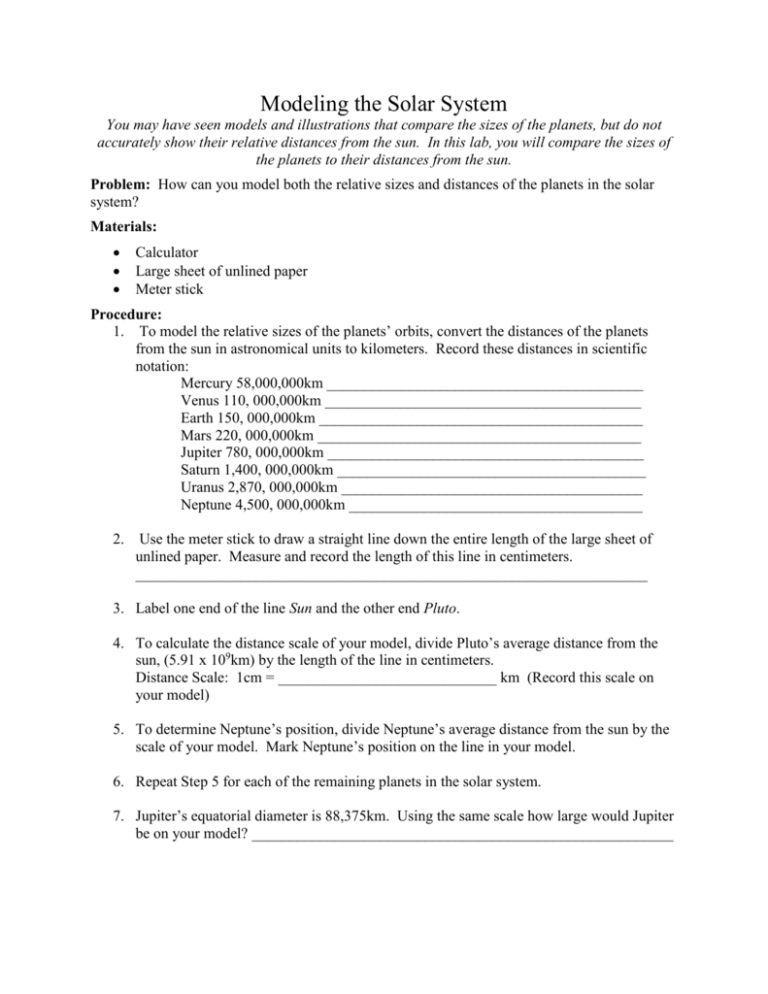
Modeling the Solar System You may have seen models and illustrations that compare the sizes of the planets, but do not accurately show their relative distances from the sun. In this lab, you will compare the sizes of the planets to their distances from the sun. Problem: How can you model both the relative sizes and distances of the planets in the solar system? Materials: Calculator Large sheet of unlined paper Meter stick Procedure: 1. To model the relative sizes of the planets’ orbits, convert the distances of the planets from the sun in astronomical units to kilometers. Record these distances in scientific notation: Mercury 58,000,000km __________________________________________ Venus 110, 000,000km __________________________________________ Earth 150, 000,000km ___________________________________________ Mars 220, 000,000km ___________________________________________ Jupiter 780, 000,000km __________________________________________ Saturn 1,400, 000,000km _________________________________________ Uranus 2,870, 000,000km ________________________________________ Neptune 4,500, 000,000km _______________________________________ 2. Use the meter stick to draw a straight line down the entire length of the large sheet of unlined paper. Measure and record the length of this line in centimeters. ____________________________________________________________________ 3. Label one end of the line Sun and the other end Pluto. 4. To calculate the distance scale of your model, divide Pluto’s average distance from the sun, (5.91 x 109km) by the length of the line in centimeters. Distance Scale: 1cm = _____________________________ km (Record this scale on your model) 5. To determine Neptune’s position, divide Neptune’s average distance from the sun by the scale of your model. Mark Neptune’s position on the line in your model. 6. Repeat Step 5 for each of the remaining planets in the solar system. 7. Jupiter’s equatorial diameter is 88,375km. Using the same scale how large would Jupiter be on your model? ________________________________________________________ 8. To place the planets on the model, we will need to change scales. Draw Jupiter, 3 centimeters in diameter, in the location you marked on your model. 9. To determine the planet’s scale sizes, divide the actual diameter of Jupiter, 88,735km, by its model size. Size Scale: 1cm = _____________________________ km (Record this scale on your model) 10. To determine Neptune’s size, divide Neptune’s equatorial diameter, 30,540km, by the scale size. Draw Neptune on the position you marked on your model. 11. Repeat step 10 for each of the remaining planets in the solar system. Each planet’s equatorial diameter is: Mercury: 4,880km Saturn: 74,977km Venus: 12,100km Uranus: 32,000km Earth: 12,756km Pluto: 1,430km Mars: 6,800km 12. Indicate where the Asteroid Belt is located on your model. 13. To determine the size of the solar system using the planet size scale. Divide the actual distance from Pluto to the Sun by the scale of the planet models. Convert the result from centimeters to meters.) ______________________________________________________________________ ______________________________________________________________________ Analyze and Conclude: 1. Using Models: How big would a model of the solar system be using the planet size scale? Explain your answer. _____________________________________________________________________ ______________________________________________________________________ ______________________________________________________________________ ______________________________________________________________________ 2. Analyze Data: What difficulty would you have including the relative sizes of the planets on the paper model you made in Steps 1 through 6? _____________________________________________________________________ ______________________________________________________________________ ______________________________________________________________________ ______________________________________________________________________ 3. Drawing Conclusions: Explain why it is difficult to model the sizes and distances of the planets at the same scale. _____________________________________________________________________ ______________________________________________________________________ ______________________________________________________________________ ______________________________________________________________________



